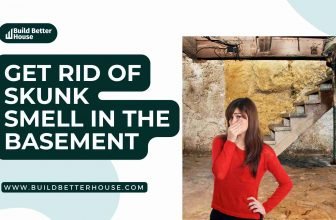Vacuum Breakers Vs. Backflow Preventers: Which One Is Better?

Most people are looking for answers about vacuum breakers vs. backflow preventers, which are vital plumbing devices that keep your home’s water supply pure.
But which one is ideal for your particular situation? Before making a final decision, you should consider numerous elements, each of which has benefits and drawbacks.
A backflow preventer and a vacuum breaker serve the same purpose: to protect the quality of your home’s water by preventing harmful external influences from contaminating it.
Read on to learn more and clear the air on the discussion between “Vacuum Breakers Vs. Backflow Preventers,” and evaluate the benefits and downsides of each device to determine which is best for you!
Vacuum Breakers vs. Backflow Preventers: Why Are Both Devices Necessary?
Backflow preventers and vacuum breakers are critical to preventing contamination of your drinking water.
Backflow preventers – A backflow preventer is designed to protect a water supply from contaminants by keeping the water pressure in the indoor plumbing system above atmospheric pressure at all times.
On the other hand, when the pressure differential between the indoor plumbing system and the pressure in an outdoor sink or piping system exceeds a specific threshold vacuum breaker is designed to reverse water flow.
Vacuum Breakers vs. Backflow Preventers: How It Works?
It would help if you understood how each device works before deciding whether a vacuum breaker or a backflow preventer is suitable for your home.
Here’s a quick rundown: A one-way valve on vacuum breakers opens automatically if there is a negative pressure in the system.
If a toilet overflows, a faucet is left running, or a stormwater line is left open, this negative pressure can occur.
Backflow preventers are installed on the main water line. They have two valves: a test valve and a retest valve. As water flows through the main water line, it contacts the retest valve and enters the city sewer.
When water flows in the opposite direction (from the sewer system to the water line), the test valve opens and closes the water flow.
Vacuum Breakers vs. Backflow Preventers: What’s The Difference?
A backflow preventer and a vacuum breaker protect your home’s water supply from contamination. The main difference between them is how they go about it.
Let’s look at the differences between a backflow preventer and a vacuum breaker.
- Location: The first distinction between a backflow preventer and a vacuum breaker is where they are installed.
A backflow preventer on the main water line is installed, and a vacuum breaker is installed downstream of an appliance, such as a washing machine, water heater, or sprinkler system.
- Operation: The second distinction between a backflow preventer and a vacuum breaker is their operation.
A vacuum breaker has a one-way valve that opens automatically if the system is under pressure. On the other hand, a backflow preventer has two valves: a test valve and a retest valve.
- Water Pressure: The third distinction between a backflow preventer and a vacuum breaker is the amount of water pressure applied.
A backflow preventer is subjected to moderate water pressure, whereas a vacuum breaker is subjected to low water pressure.
Vacuum Breakers vs. Backflow Preventers: What To Look For?
You may be wondering what to look for when selecting a vacuum breaker or a backflow preventer now that you understand the fundamental differences between these devices.
Here are some essential factors to remember:
- Flow rate: The flow rate is the volume of water that flows through the device in a given time. The higher the flow rate, the more frequently the device must be maintained or replaced.
- Size: The dimensions of the vacuum breaker or backflow preventer are critical because they determine the pipe size it will install. The pipe fitting size is determined by subtracting the vacuum breaker’s or backflow preventer’s inside diameter from the pipe’s inside diameter.
- Location: As we’ve already discussed, the vacuum breaker’s location or backflow preventer’s location is critical in determining which one to choose.
Vacuum Breakers vs. Backflow Preventers: Pros & Cons
Vacuum Breaker: Pros & Cons
Vacuum Breaker: Pros & Cons
Vacuum Breakers Vs. Backflow Preventers: Which One To Choose?
As per the pointers mentioned above, you may sort yourself into the discussions between vacuum breakers vs. backflow preventers.
The debate ‘vacuum breakers vs. backflow preventers’ is based on two primary considerations: the type of water supply you have and the position of the vacuum breakers or backflow preventers near your water source. Water supply classifies into two types: inside-the-premises (ITP) and outside-the-premises (OTP):
You must install a backflow preventer if you have an ITP water supply. In case your water supply is OTP, and you’re installing a vacuum breaker, make sure the vacuum breaker and the water source are on the same side of the property line. We do this to keep contaminants from outside sources, such as pesticides and fertilizer, from entering your home’s water.
Final Words
Vaccum breakers vs. backflow preventers are essential for keeping your home’s water supply clean. They approach it, however, in different ways. If the system is under pressure, a vacuum breaker’s one-way valve opens immediately.
On the other hand, a backflow preventer contains two valves: a test valve and a retest valve.
The major aspects when determining which one to choose are the type of water supply you have and the position of the vacuum breaker or backflow preventer in relation to your water source.
Read more:
How To Remove Hose From Spigot In 4 Simple Steps
Water Bubbles on the Ceiling – How to Fix It?
Fluidmaster vs Korky: Which Toilet Replacement Is The Best?






